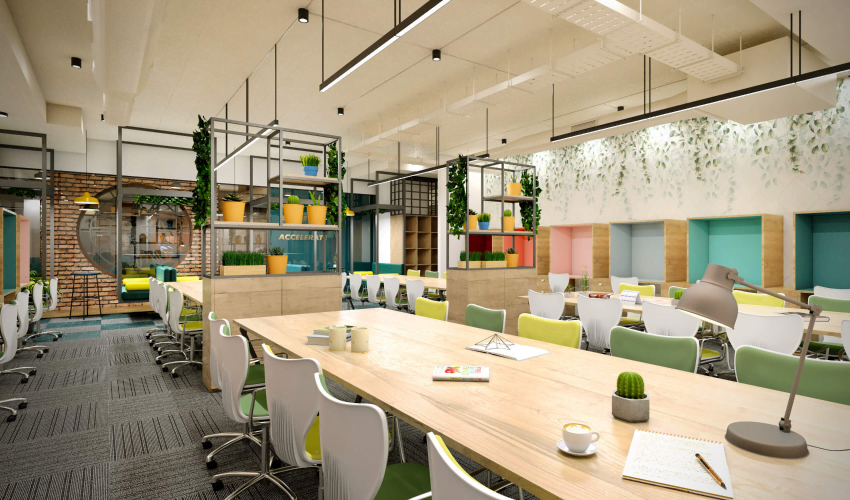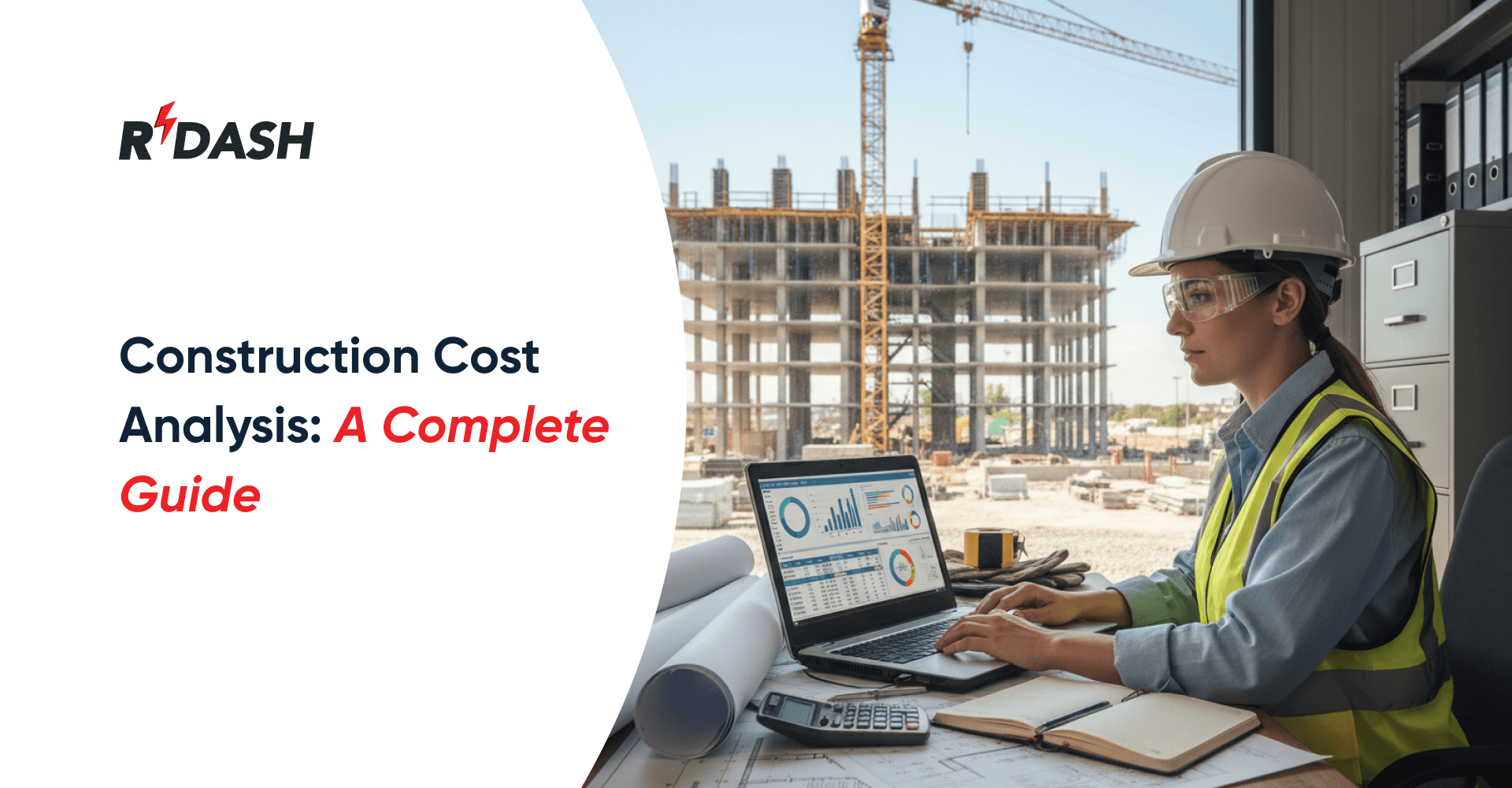This blog explores the dynamic co-working landscape in India, focusing on cost optimization strategies that can provide co-working operators a competitive advantage. It delves into the industry’s growth trajectory, prevalent offerings, and the emergence of innovative models & opportunities.
With a deep dive into cost operations, it examines lease arrangements, fit-out endeavors, and the complexities of maintaining & managing co-work spaces. Through a customer case study, the challenges faced are highlighted, leading to the introduction of solutions that streamline processes, enhance collaboration, and significantly reduce overall project expenditure.
Emerging Coworking Space Landscape in India
2019 was a landmark year when co-work spaces leased over 10 mn sqft across the top seven cities in India with Bengaluru leading the way.
During the two successive waves of COVID-19, the sector remained resilient and thereafter has come out as a resurgent industry growing with innovative offerings catering to the new emerging needs of workplace strategy of disrupting and disrupted businesses, most notably of those involved in IT/ITES.
Current Co-work office stock in India stands at 40mn sqft run by 300 small and big cowork operators. While the top seven cities – Bengaluru, NCR, Mumbai, Chennai, Kolkata, Pune, and Hyderabad account for 90% of this stock, tier 2 cities are showing signs of being the next zones of growth.
Popular offerings of Coworking Operators: Managed Workspace, Hybrid Workspace, Flexi desks, and shared spaces.
Even Owners-Landlords and real estate management companies are looking at increasing the share of coworking spaces in their portfolio. This has led to the Emergence of PropCo-OpCo models with master lease agreements to move towards revenue-sharing arrangements allowing co-work operators to expand with an asset-light model without much capex and risk. This also opens an opportunity for owners to enter the coworking space segment themselves through strategic investments and tie-ups.
Understanding Cost Operations of Cowork Spaces
A Co-work operator’s business operations can be seen as a composite of two: its revenue side and cost side. Let’s call them Cost operations and revenue operations and find finer opportunities for optimization across their operations.
Revenue operations of a co-work can be divided into its Sales & marketing activities through various channels. Key marketing channels for coworking spaces would be Property Consultants / Brokerage Firms, Digital Marketing (SEM, SEO, Google Adwords), Social Media Marketing (FB, Instagram, Linkedin), Events (Coworking spaces often offer free events areas for networking events, skill development workshops, open mics, etc which increases the footfall & visibility of the space), Referrals, Content Marketing & PR (Blogs, articles, interviews, media coverage).
On the other hand, Cost Operations of a Co-work company can be broadly divided into 3 major activities-
1. Leasing–Renting from the Owner:
The rental rates for commercial spaces in any Grade A buildings in Mumbai (Andheri, Kalina, BKC, Lower Parel, Worli, Thane, Vashi) can vary anywhere from Rs. 150- Rs. 300 per sq feet. Commercial spaces likely follow a pattern of occupancy followed by a vacancy period, which averages out the rentals for owner to a lower rental rate. Since Coworking is a long-term business with high investments in furnishings, setup & marketing, and thus, longer gestation periods, it makes sense for a co-working company to engage with a space owner with a minimum of 7-10+ years commitment, and get much better rates, on an average 20-30% lower than that for a regular office seeker with a lower appetite for commitment period.
2. Fit-outs & Furnishing :
What truly makes Co-work spaces attractive for seekers is the modernity, quirkiness, and warmth that the architecture of these spaces offers with a good mix of work areas and recharge zones. However, All this comes at a cost and one of the main jobs of the architects and projects head at these companies is continuous value engineering of interior design and material specifications so as to arrive at a functional, aesthetically pleasing, and agile set of fit-out items.
Whether rolling out its own property or designing for a client’s custom-managed space requirements, a typical Fit-out and furnishing project involves mainly these activities: Demolition, Civil and dry masonry works, Tiling and flooring, Electrical, HVAC, plumbing, Furniture & carpentry, Painting & wallpapers, Landscaping and planters.
These project activities need skilled leadership in projects, on-ground project managers, reliable contractors, and coordination between designers, site engineers, and specialty trade contractors( electrical, HVAC) to actually deliver the furnished space on time, within budget, and of desired quality.
3. Managing or Running the space
Once the property is ready and office space occupiers have come around, the co-work operator needs to service their customers with the best and uninterrupted services. These Cost activities can be summarised into:
-
- Utilities like Electricity, Maintenance and repairs, Leased Internet lines, Housekeeping and pantry Consumables, Basic Stationery, etc
-
- Salaries of Office Assistants, Housekeeping and security Staff, Community Managers, Sales Managers, Accounts team, etc.
-
- Other Costs like Compliance, Insurance, and accounting costs would be minor overhead for a large space.
Diving into our Customer’s Problem
Let’s get into the case of one of our customers, a leading Co-work operator in the country, which faced problems in its cost operations: specifically in Fitouts-furnishing and managing the space
The Co-work operator has 35 properties across 14 cities with 2 Mn+ SQFT rolling stock. It offers Managed office service as well as Hybrid co-work spaces to its clients.
While Its business pipeline & projection have picked up after the second wave of COVID-19 due to rising demand and strong marketing and business initiatives, there are a lot of challenges that the company faced in rolling out new properties and on-demand managed offices designed for its clients. Listing those problems out as discovered by our customer success team during the initial phase of problem understanding:
-
- Modification Difficulty: Struggling to execute modification projects on site due to improper mapping of assets with individual projects: what to keep, what to shift, and what to discard.
-
- Multiple site-surveys-related delays: Pre-construction site survey used to be carried out in the absence of standard guidelines which made it difficult to capture all necessary details in a single recce, leading to multiple visits and inefficiencies.
-
- Lack of Project Progress Visibility: There was no clear visibility of project progress on site, leading to difficulties for the customer-facing team to convey the status to clients and prepare for their onboarding.
-
- Collaboration issues and Miscommunication: Multiple delays were experienced due to challenges in collaboration between designer-project manager-contractor.
-
- Delayed Financial Closure: Waiting for documentation like materials purchase orders, receiving notes, vendor invoices, Overhead proofs, etc extended the financial closure process to 7-10 days.
-
- Budget overshoot by the end of the project: In the absence of a track on the installed budget, the budget used to overshoot, invariably every time.
-
- Scattered Data: Data was dispersed across various platforms such as WhatsApp, Excel, and emails, making it impossible to gain valuable insights for improvement for project leadership around where to value engineers.
-
- Maintenance Tracking: Issues like plumbing leakages, furniture damages, AC faults, paint scratches, etc are very common. The lack of a tracking system for this was leading to the maintenance team operating in the dark.
Solving the Problem
Keeping the co-work operators’ problems in mind, the customer success team of RDash implemented a set of solutions for the Co-work company and trained the team on those key features.
-
- Digitization of BOQ and standard Inventory: Each BOQ item was digitized and assigned a digital reference number, which helped the client in simplifying asset management and facilitating easy modifications in the future with precise element-level data being mapped with individual projects.
-
- Value Engineering: Digitised BOQ helped the project team in deep element-level analytics and cost optimization through value engineering, ensuring efficient budget management.
-
- Enhanced Project Visibility: The Platform provided complete visibility of each project’s stage, along with associated deadlines, giving the leadership team control of their sites right from their office.
-
- Effective Collaboration: The platform facilitated effective collaboration among team members through Contextual discussion on design changes, purchase orders, and runtime issues.
-
- Delay Tracker and Notifications: Along with real-time site progress reports, the platform enabled Delay Trackers and alerts for all activities, helping relevant stakeholders with timely intervention and preventing major deviations in timelines and budgets.
-
- Vendor Management: All vendors were digitally onboarded along with their digital rate contracts. Vendors received all work through the platform.
-
- Financial Accounting under cost heads: The platform eliminated episodes of overspending and malpractices by mapping all project overheads to the appropriate cost centers such as Material cost, Contractors’ bills, Travel, imprests, onsite purchases, etc.
-
- Data Management: Training the company’s projects and finance team on the user-friendly platform enabled all relevant stakeholders to log in and manage the shared information repository covering every aspect of the projects including Site Survey reports, Design Files, approved BOQs, Purchase Orders, Progress Updates, Goods receiving notes, Vendor bills and indirect expense proofs.
-
- Smooth Financial Closure: With proper approvals & documentation automated at each project stage already, reconciliation & financial closures became easy allowing transparency for future reference.
After Implementing the above solutions, The customer experienced the following results in Project costs and performance:
-
- 9% Reduction in overall Project Expenditure : 3.5% – By means of improved Rate Contracts, 3% due to unnecessary manpower & Travel cost, 2.5 % Due to avoiding rework.
-
- 3.5% Additional Save which earlier went in dead rentals.
-
- 20% faster execution: Average delay due to unplanned site issues reduced to 1.5 days, Drastic cut-down in Pre-construction & planning time, 60% of delay alerts attended by management and action taken.
The starting point of reducing cost is to recognize contributing costs under various cost heads for all projects, however small the cost head might seem. Then, deploy an engine that alerts these cost heads for each project level as well as the company level.
Unlike traditional project management ERPs, RDash made sure that as a project progressed, the costs got allocated under the right heads. Whenever the cost head’s limit reaches, the system raises alerts and every penny gets accounted for. Moreover, with alerts on delays of milestones, the management could take timely action and bring the project activities back on track. This meant a real-time project control tower in the hands of management through which they could fastrack projects and keep a check on cost, at the same time.
Summarizing
To gain a competitive edge, Co-work Operators must divide their strategic operations into two – the legs (Cost Operations) and the wings (Revenue Operations). Strong leadership in sales and innovative marketing practices signify how to keep growing and spreading your wings. The legs represent operations-intensive activities such as leasing operations, expertise in Fit-out projects, and running the space like clockwork. In cultivating a long-term strategy, these enterprises must continuously strive to build their leg strength or fortify their foundational strength to ensure preparedness for the market opportunities that lie ahead.







